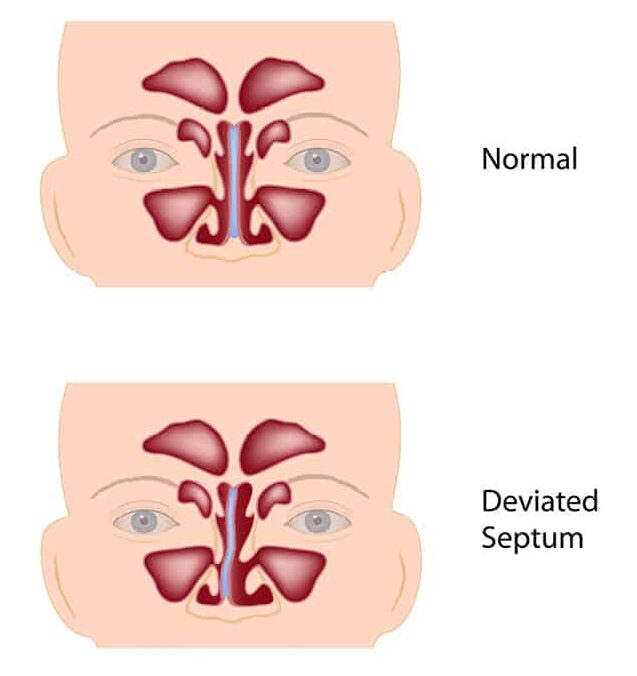Septoplasty
Septoplasty is an operation to correct a deformity in the wall that divides the two sides of the nose (the septum). When the nasal septum is deformed and causing symptoms, surgery is the only effective way to correct it.
This procedure may be an appropriate option if you suffer from significant breathing problems, frequent sinus infections, snoring/sleep apnea, or facial pain/headaches. Surgical treatment of a deviated septum should only be performed by an ENT surgeon or a facial plastic surgeon. Typically performed to improve nasal breathing, the procedure may also be used to allow adequate access to the inside of the nose for treatment of polyps, inflamed tissue, tumors or bleeding.
What happens during a septoplasty?
A septoplasty is a relatively minor surgery that typically lasts about an hour. It is usually performed as an outpatient procedure, meaning that you would go home the same day. It is almost always performed under general anesthesia, which means you would be completely unconscious and feel no pain.
During a septoplasty, a patient is first placed under anesthesia and a breathing tube is carefully placed in the patient’s upper airway to protect it and to control the breathing rate and oxygen level. Next, a small incision is made, usually inside the nostril where it is not visible. The surgeon works beneath the lining of the nose to straighten any crooked areas of bone or cartilage of the deviated septum before closing the incision. In some cases, special splints or packs may be placed in the nose to improve the results or to prevent bleeding.
During a septoplasty, the surgeon may also perform a size reduction of the inferior turbinates to further improve the nasal breathing, or a rhinoplasty (a.k.a., a “nose job”) to improve the outside shape of the nose. If your ENT determines that you also have chronic inflammation or infection of the sinuses, sinus surgery would likely be done at the same time as a septoplasty in order to open and clean out the sinuses.

What will my recovery be like?
If you are having a septoplasty alone, or septoplasty combined with other outpatient procedures, you will most likely go home the same day. You should expect your nose to be sore for the first several days, but significant bruising or swelling is uncommon. You may notice that it is actually harder to breathe through your nose at first, either due to swelling from the surgery or because of splints or packing that were placed by your surgeon at the end of the surgery. Your physician may prescribe medicine for pain or nausea, and/or antibiotics to help prevent infection. Sometimes, minor nosebleeds can occur after surgery for the first one to two days. Most people fully recover within two weeks.
Who is a candidate for a septoplasty?
You may be a candidate for a septoplasty if you suffer from moderate or severe nasal obstruction, snoring/sleep apnea, or other symptoms associated with a deviated septum. Your surgeon will also consider other important factors such as:
- Age
- Previous surgeries
- Medical risk factors
- Alcohol, drug, and tobacco use
- Overall health
- Preexisting conditions
If you suspect you have a deviated septum, an exam by a medical professional is the first step to finding relief. The ENT specialists at CornerStone Ear, Nose & Throat have years of experience diagnosing and treating deviated septum and performing septoplasty to relieve nasal obstruction. To learn more or to make an appointment with CornerStone Ear, Nose & Throat, call 704-752-7575.






